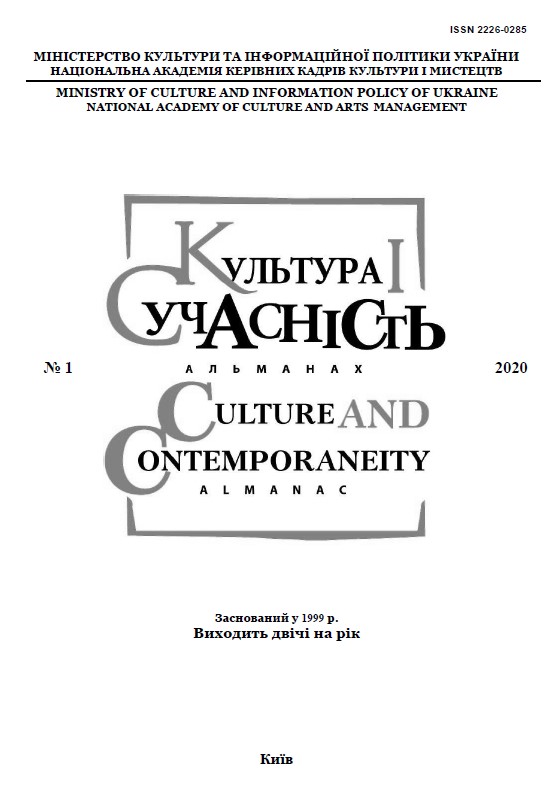ТВОРЧІСТЬ СТЕФАНА, МАЛЯРА ПАШЕЦЬКОГО (1730-ті роки): АТРИБУЦІЯ Й СТИЛІСТИЧНА ХАРАКТЕРИСТИКА В КОНТЕКСТІ УКРАЇНСЬКОГО ІКОНОПИСУ
THE ARTISTIC LEGACY OF STEFAN, PAINTER PASHETSKY (THE 1730S): ATTRIBUTION AND STYLISTIC CHARACTERISTICS IN THE CONTEXT OF UKRAINIAN ICON-PAINTING OF THE TIME
Author(s): Roksolana Romanivna KosivSubject(s): Christian Theology and Religion, Cultural history, History of Church(es), Visual Arts, 18th Century, History of Art
Published by: Національна академія керівних кадрів культури і мистецтв
Keywords: church art; iconography; icon; wall painting; painter Stefan Pashetsky; Peremyshl diocese;
Summary/Abstract: The purpose of the article is to study the artistic manner of Stefan Pashetsky, to use his signed work for the attribution of other icons, and to introduce his legacy in the context of the Ukrainian icon painting of the first half of the 18th century. Methodology. Formal and stylistic analysis, iconography, iconology methods, and method of cultural context study were used to achieve this goal. The scientific novelty of the article is that for the first time the works of Stefan, a Pashetsky painter, who worked in the 1730s for the churches of the Peremyshl diocese, were comprehensively examined. It has been found out that the painter synthesized the innovations of stylistics and iconography inherent in the Ukrainian art of the late 17th – the first third of the 18th century with traditional motifs that have evolved in local medieval church art. It is revealed that Stefan Pashetsky worked in a similar style with the masters of the large center of church art active in the 1670s – 1760s in the town of Rybotychi near Peremyshl. Conclusions. The work of Stefan Pashetsky fits into the achievements of masters of church art of the Peremyshl diocese in the first half of the 18th century. It is important to note that during the time of Stefan Pashetsky's work, the Latinization processes among the clergy of the Peremyshl diocese, initiated by the decrees of the Zamoysky synod in 1720, intensified, which was also reflected in local church art. In this context, the works of Stefan Pashetsky present rather a conservative line of icon painting, based on the tradition of the last century. The wall paintings and icons of Stefan Pashetsky indicate that, like most Ukrainian masters, he adapted new sources of iconography, mainly through the engravings from the old printed books of Lviv and Kyiv. However, his approach is recognizable and distinguished by an individual authorial manner.
Journal: Культура і сучасність
- Issue Year: 2020
- Issue No: 1
- Page Range: 118-122
- Page Count: 5
- Language: Ukrainian

